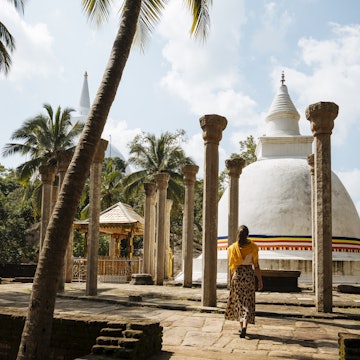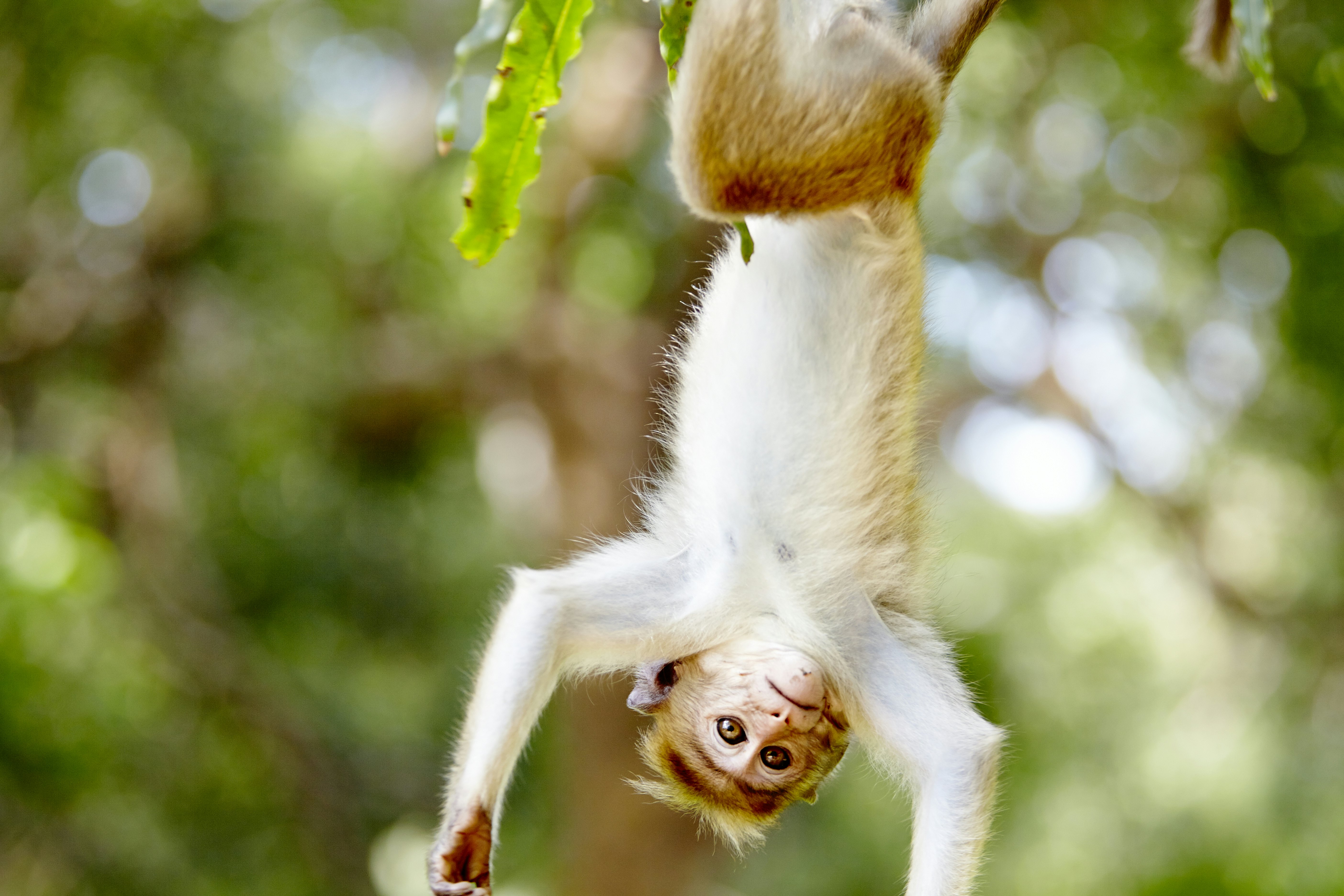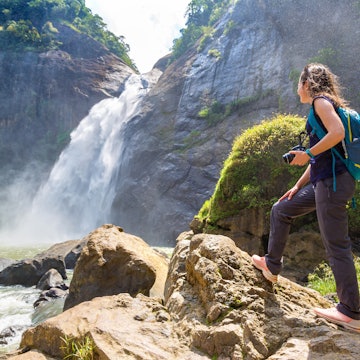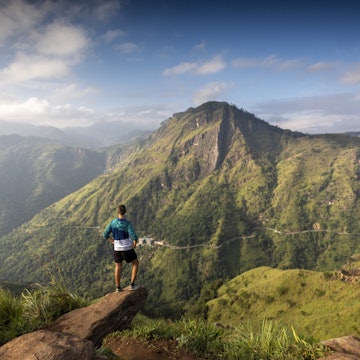

The serene waters of Sri Lanka's Madu River are best explored by boat. Chalabala / Getty Images
I’m putt-putting my way along the waters of the Madu River in Sri Lanka, when local boatman Manis points out the highlighter-bright birdlife in the trees. The riverbanks are thick with foliage of banana, cinnamon and balsa trees, and birds aren't the only thing on display; the branches of the balsa being polka-dotted by poisonous lime-green fruit. I look up to see a hawk seemingly pause in midair.
Exploring the Madu River
On our way we pass only a few other boats: fishermen balancing on narrow canoes, and two or three small tourist boats filled with visitors who gaze back at us from behind their cameras as we glide past. When thinking of Sri Lanka, I think of elephants and rock temples, of Buddhism and beaches, of surfing and turtles. It’s not a country that I associate with boat trips and kayaks. Yet these inland waters are some of the country’s more hidden splendours.
The southern Madu River is wide and peaceful, its wetlands being the second biggest in the country. The largest is further north, the Muthurajawela Marsh, whose name means "Swamp of Royal Treasure". The Muthurajawela stretches over 30 sq km, and you can also take boat tours on its Negombo Lagoon. The Madu's marsh, a biodiverse sanctuary fed by seven tributaries, spreads across around a third of that size, but it's dotted by around 30 islands, some of which are sizeable enough to support large communities.
Read more: Get on board: the best train journeys in Sri Lanka

I look down to see waterlilies spreading out from the Madu's banks, some flowers hot pink, others lemon-gold. A water hen struggles past, and ink-black cormorants perch on sticks mid-water, watching for fish. The area is home to thickly knitted mangrove forests, with hidden tunnels through which boats can glide to other channels. As we turn into one, everyone ducks to avoid the low branches. In other areas, palms lean over the water, the taller ones swaying with monkeys who lollop from branch to branch. The banks teem with indigenous life, such as slow-swimming monitor lizards, green imperial pigeons and a yellow-billed babbler.

Later we stop at a large island named after its main crop: cinnamon. We hurry ashore sheltered by umbrellas, as big fat raindrops from the late monsoon have started to slap against the boat's canopy. We take shelter at a shack on a small promontory, where Manis offers us tea made from the freshly ground spice. Soon one of the islanders arrives to show us how they collect the cinnamon, easing the bark of a branch with a sharp knife. The air is warm and we sip the soothing tea under the perfectly waterproof roof, which was woven from coconut palm leaves. We're surrounded by rows of cinnamon, which have been laid out to dry.
After the rain has eased we head back to the boat and continue along the river. I soon spot another monkey, this one leaping from a papaya tree with a baby on its back. We pass Madu Island, which Manis tells me is home to several hundred houses, a school and a bank, but no vehicles (not even a tuk tuk). The river eventually opens into a huge lagoon, enclosed by jungle, and as the light begins to fail we putter over to a shrine on an islet. It’s devoted to Ganesh, and the fishermen come here to pay their respects to the elephant god.
Read more: Why I won't give up on Sri Lanka, and why you shouldn't either
My boat trip has lasted three hours, but I’m still wanting more. Taking to the rivers in Sri Lanka is an incredible way to see some of the country’s teeming wildlife, from birds to monkeys, and from butterflies to the slow shimmy of a monitor lizard. It's also a lesson in slow travel, and an unsung way to explore this island nation.
Other river trips
Besides trips on the Madu River, you can also take boat tours on parts of Sri Lanka’s largest marsh and lagoon system from Negombo and Bentota; all are offered by local hotels and companies. Experience Travel Group offer, in addition, tours in the east, which allow the chance to visit local villages, eat with a local family and ride on a traditional fishing boat around the 31km-long Unnichchai Tank. To the north, early morning boat rides in a lake at the foot of Pidurangala are also possible, with views of the famous rocks followed by breakfast at a small camp site.
Read more: Responsible animal watching in Sri Lanka
House boats
Set less than a kilometre from Lunuganga and 3.5km from Bentota Lake, the Yathra Houseboat by Jetwing is a lovely, bamboo-framed, coconut-palm-shaded boat, with outdoor terraces overlooking the river. Guests can take a five-hour cruise before staying overnight. Flow by the Amber Collection offers houseboat accommodation in Piliyandala, which includes cruising on Bolgoda, Sri Lanka’s largest freshwater lake, less than an hour east of Colombo. The boats are designed to resemble a walauwa (traditional Sri Lankan house), but have huge windows and luxe, boutique-style rooms.
Read more: Sun, sand and Sigiriya: tips for family travel in Sri Lanka

Other water-based activities
There’s great rafting on the Kelani River, either gentle meanders or adrenaline-firing whitewater rapids. Action Sri Lanka are specialists in local water sports. A great place to go kayaking is Tangalle; try the richly biodiverse Rekawa and Mawella lagoons, the latter with a bat cave and heron island. The most incredible birdwatching in the country is that at the Kalametiya Bird Sanctuary, where you can also take to the lagoon by boat. On the northwest coast, 120km north of Colombo, is Kalpitiya; its coastal lagoon sanctuary is rich in birdlife and has Sri Lanka’s last remaining pink dolphins (most easily spotted from November to March). On the east coast in Arugam Bay – one of Sri Lanka’s least developed areas – you can go kayaking on Pottuvil lagoon, spotting elephants around its edge. You’ll find plenty of tour operators locally: ask around for a recommendation.
Abigail Blasi travelled to Sri Lanka with the support of Asia Leisure Ltd and Experience Travel Group. Lonely Planet contributors do not accept freebies in exchange for positive coverage.















